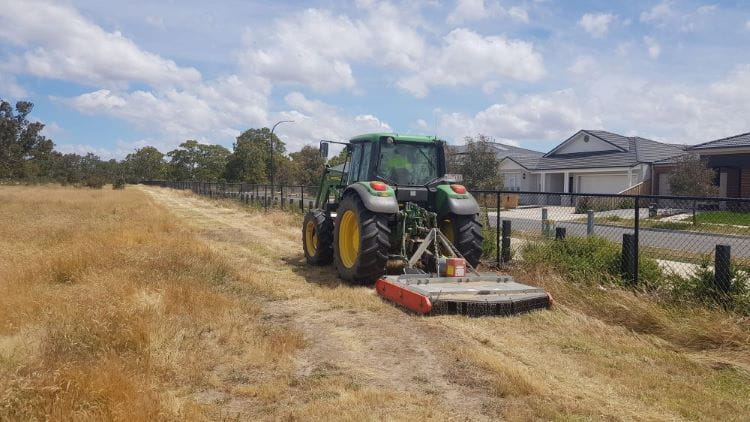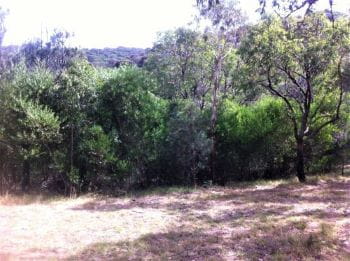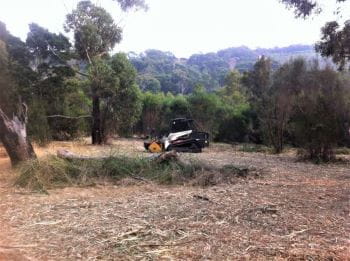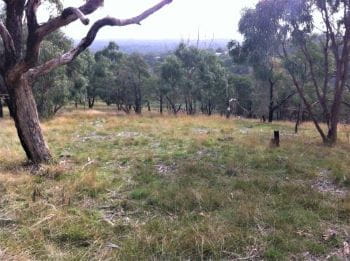Melbourne bushfire preparedness
The Melbourne Fire and Emergency Program (MFEP) aims to reduce risk to communities, assets and the environment from fire and other emergencies on public land in and around Melbourne’s urban interface.
On this page
- Why is bushfire preparedness important in Melbourne?
- What is Forest Fire Management Victoria and the Joint Fuel Management Program?
- How do our Parks prepare for fire?
Why is bushfire preparedness important in Melbourne?
Where bushland meets high population densities in and around Melbourne, there is a higher risk of bushfire.
Bushfires are a natural part of the Australian landscape and cannot be eliminated. However, effective planning and preparation can help reduce the size, intensity and negative effects of future bushfires. This lessens their impact on our communities, the things we care about and on the environment. It also helps support plants and animals that need fire for their survival.
We aim to protect:
- Human life
- Property
- Assets, utilities and infrastructure
- Flora and fauna biodiversity and habitat (that can be severely reduced when a major bushfire happens)
- Water catchments, courses and bodies
- Cultural and historic heritage
- Businesses, tourism, industries and recreation.
What is Forest Fire Management Victoria and the Joint Fuel Management Program?
Forest Fire Management Victoria (FFMVic) includes staff from the Department of Environment, Land, Water and Planning (DELWP), Parks Victoria, VicForests and Melbourne Water.
FFMVic works to minimise the impact of major bushfires on human life, communities, infrastructure, industries, the economy and the environment. For more information visit the FFMVic website.
FFMVic and Country Fire Authority (CFA) work together on the Joint Fuel Management Program (JFMP) - a state-wide program that manages fuel on public and private land over the next three years.
MFEP’s annual slashing program, vegetation mulching and planned burn preparation are all included in the JFMP.
Reducing bushfire risk, like any land management activity, is a complex balancing act that doesn’t happen in isolation. To get the right balance between bushfire risk reduction, environmental health, community wellbeing, recreation, business, and industry, we must all work together.
To find out more about how state, regional and local agencies, government and communities are working together to better understand and reduce the impact of bushfires, visit the Safer Together website.
How do our Parks prepare for fire?
Parks Victoria manages a lot of the public land in and around Melbourne and therefore has an important role to play in reducing bushfire risk. We deliver fire prevention activities across greater Melbourne from the Mornington Peninsula to the Dandenong Ranges, Lower Yarra Valley and west to Melbourne's grassland reserves and the Werribee River.
We prepare for bushfire by:
- Building and maintaining fuel breaks, including grass slashing
- Preparing for and taking part in planned burning
- Mulching and cutting back vegetation
- Building and maintaining fire and emergency access roads.
All of these activities are planned to suit the local area and minimise any impact on environmental, cultural heritage and social values.
- What types of plants or animals are in the area?
- Are there any habitats that need protecting?
- What does the landscape look like? What is the topography like?
- What is the weather like in the area?
- What is the history of fire in the area?
- What does our modelling say about the bushfire risk?
- Is there any known or possible cultural heritage that needs protecting?
Weed and pest animal control is carried out after planned burning and vegetation mulching.
We undertake this work as part of FFMVic and many of these activities are included in the JFMP.
Fuel breaks and grass slashing
Fuel breaks are a gap in available fuel (for example grass, leaves, shrubs, twigs and bark) that can burn in a fire and tend to be 6 - 20 m wide. Fuel breaks are sometimes referred to as Strategic Fuel Breaks and are up to 40m wide.
We build and maintain fuel breaks across Melbourne, with many of them along the boundary of public and private property.
A fuel break alone won’t stop a fire, but they can help to:
- Reduce the potential for a bushfire to start, develop or spread
- Providing access for vehicles and machinery
- Control fires. For example, we can quickly use a fuel break to back-burn ahead of an approaching bushfire or as a boundary to a planned burn.
Grass slashing
When grass in parks throughout Melbourne starts to dry out, our annual fuel break slashing program is ready to begin.
With over 1000 kilometres of fuel breaks across Melbourne, we need to carefully time our annual slashing to get the best bushfire risk reduction outcome. Grass is not slashed along fuel breaks based on its height, but on its dryness, or ‘curing’. Usually, grass is dry enough in late spring or early summer.
Slashing occurs once a year after spring growth when grass has nearly dried out. Sometimes a second cut is required in years when there is a lot of rain and growth rates are high. Heavy rain in spring may also delay the start of slashing, because the ground is too wet and the machinery cannot access the area safely.
To see where fuel breaks are slashed, visit the FFMVic JFMP.

Planned burning
A planned burn is the controlled use of fire under carefully managed conditions to reduce finer fuels such as dead wood, leaf litter and bark.
Planned burning is a key part of FFMVic's bushfire risk strategy to protect communities, property and the environment.
As well as reducing the risk posed by damaging bushfires, planned burns are carried out to help regenerate heathlands and grasslands, protect and strengthen ecological systems, and to help manage weeds, pests and diseases.
FFMVic is also committed to reinvigorating Traditional Owner-led cultural land and fire management practices.
See if there are any planned burns near you.
Vegetation mulching
Mulching is a mechanical or ‘non-burn’ fuel treatment that can be used instead of, or in conjunction with planned burning. It breaks down or rearranges fire fuels (such as shrubs and woody weeds) which reduces the risk of bushfires. A range of machines can be used to perform this task depending on the landscape, sensitivity of the plant life on the ground, or the cultural heritage of the area.
There are multiple reasons we use mulching (as opposed to planned burning) across Melbourne, these include:
- Vegetation type
Some vegetation may not be suitable for planned burning. Burning might also encourage an influx of invasive species in some areas, preventing indigenous plants from being able to grow back. - Complexity of burn delivery
Difficult terrain, closeness to houses and other infrastructure, and significant negative impacts to community, industry, or the environment are sometimes so complex that planned burning is not effective or safe to deliver. - Weather conditions and timing
Planned burning requires a very specific set of weather conditions to be safe and effective. If weather conditions are consistently unfavourable for an area, it may remain untreated for many years. Depending on the area, mulching may be an alternative.
Ecological impacts
In certain environments, mulching has the ability to manage and reduce the spread of weeds and invasive native species. By practicing mulching, other species are given the opportunity to regenerate as they are no longer dominated by the rapid growth of weeds. Research into the ecological impacts of mulching is ongoing.
Example of mulching in Waterfall Gully in Arthurs Seat State Park:



Photos from left to right: before mulching in 2014 (thick mid-storey vegetation, high fire risk), during mulching in 2014 (removal of low and mid storey shrubs and woody weeds. Can look confronting), after mulching in 2016 (regrowth of lower storey native grasses, much lower fire risk).
Fire and emergency access roads
Safe, fast and effective access is important for bringing a bushfire under control as quickly as possible.
For bushfire management, we create and manage different types of roads, depending on which type of firefighting vehicle and/or machinery can access that road.

